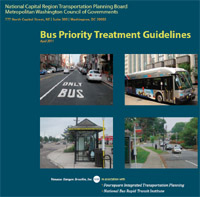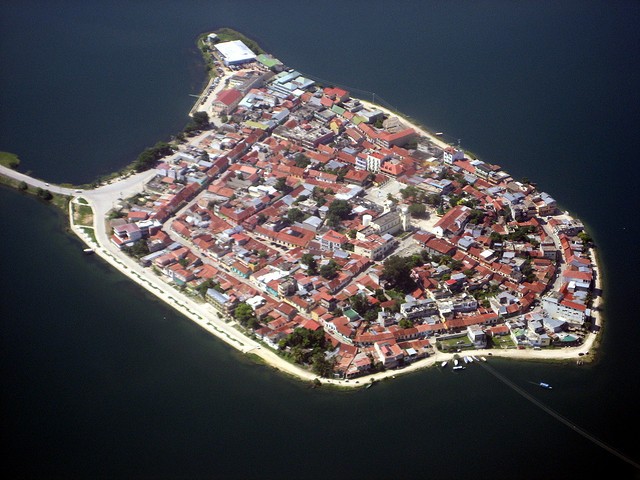|
Special Features





Image Libraries


|
|
Blog
Someone claiming to be a DDOT employee left an anonymous comment in the GGW thread about the L and M Street cycle tracks, which are being reconsidered. It’s impossible to know if the comment is legitimate; it may be from a DDOT employee with inside information, or it might just as easily be a troll who lied about his identity. But if the comment is legitimate then it is quite troubling. Here it is:
“Here is the real scoop from inside the agency. Bellamy wants to follow through on Klein’s work but has been told in no uncertain terms to back off from aggressive projects, specifically L and M. There is no studying to be done, that’s jspust (sic) a smoke screen as everyone knows. These hearings are not enjoyable as you have to protect your boss and Well’s (sic) undoubtedly knows the real scoop. This is sad, but Mr. Gray is all talk, and is basically anti new urbanism. He wants to avoid clashes with his base that supported him, and not come off as a gentrified. I’m sorry people, but this is the truth, as disappointing as it is.”
– GGW commenter “D.employee”, Jun 27, 2011
Average Rating: 5 out of 5 based on 292 user reviews.
June 29th, 2011 | Permalink
Tags: bike, government, transportation

|
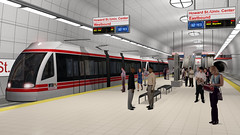
Proposed Baltimore Red Line subway station. |
With yesterday’s news that the Baltimore Red Line is being advanced to Preliminary Engineering, it seems a good time to check up on the various rail and BRT projects in the region and report on their status. I’ve ranked them below by planning category and anticipated completion, and have included Nofolk’s light rail line even though it’s outside the region.
For the purposes of this post, projects will be categorized into the following phases:
- Concept: The project is in early planning, including alternatives analysis and environmental clearance.
- Design: The project is in the engineering phase, including Preliminary Engineering (PE). Conceptual details have been finalized and detailed construction plans are being prepared.
- Construction: The project is under construction.
| Project |
Status |
Description |
Anticipated Opening |
| Norfolk ‘The Tide’ Light Rail |
Construction |
Construction is largely complete. Trains and tracks are in testing now. |
August 19, 2011 |
| H Street Streetcar |
Construction |
Streetcar running from Union Station to the Anacostia River via H Street. Under construction now. |
2012 |
| Silver Line Phase I |
Construction |
Metrorail extension from East Falls Church to Reston via Tysons Corner. Under construction now. |
2013 |
| Crystal City Potomac Yard Busway |
Design |
Exclusive busway from Crystal City Metro to Braddock Road Metro. Final design underway now. Some segments have already been constructed by private developers. |
2013 |
| Baltimore Red Line |
Design |
Light rail line running east-west through Baltimore. Recently advanced to PE from Concept. |
2016 |
| Silver Line Phase II |
Design |
Metrorail extension from Reston to Loudoun County via Dulles Airport. PE currently underway. |
2017 |
| K Street Transitway |
Design |
Exclusive transit lanes running east-west on K Street from Washington Circle to Mount Vernon Square. Environmental work completed in 2009, now awaiting funding before moving forward. |
Not published |
| Anacostia Streetcar |
Construction/Concept |
Streetcar from South Capitol Street to 11th Street bridge via Ancostia Metro. Construction of a short segment near South Capitol Street is mostly complete. The majority of the line is undergoing an alternatives analysis / environmental review that will be completed late in 2011. |
Not published |
| Benning Road Streetcar |
Concept |
Extension of the H Street Streetcar east across Anacostia River to Benning Road Metro. Alternatives analysis & environmental review to begin summer 2011. |
2015 |
| Columbia Pike Streetcar |
Concept |
Streetcar from Pentagon City to Bailey’s Crossroads via Columbia Pike. Environmental planning underway now. |
2016 |
| Potomac Yard Metro Station |
Concept |
Infill Metro station in Alexandria. Environmental planning underway now. |
2016 |
| K Street Streetcar |
Concept |
Extension of the H Street Streetcar west to Washington Circle through downtown Washington, potentially via the K Street Transitway. Alternatives analysis & environmental review to begin summer 2011. |
2018 |
| Crystal City Potomac Yard Streetcar |
Concept |
Potential conversion of CCPY busway to streetcar. Environmental planning underway. |
Not published |
| Maryland Purple Line |
Concept |
Light rail line running east-west through Maryland suburbs of DC. Concept stage largely complete. Expected to move to PE in summer or autumn 2011. |
2020 |
| Corridor Cities Transitway |
Concept |
Light rail or BRT line running north from Shady Grove Metro. Concept stage nearing completion. Mode will be determined this year. Expected to move to PE in late 2011 or 2012. |
2020 |
| DC Streetcar Other Segments |
Pre-Concept |
The rest of DC’s proposed 37 mile streetcar system. Planning has not yet begun. |
Not published |
Average Rating: 4.8 out of 5 based on 166 user reviews.
June 28th, 2011 | Permalink
Tags: BRT, featured post, lightrail, metrorail, streetcar, transportation

|

15th Street cycle track. |
According to DDOT the L and M Street cross-town cycle tracks are on hold and may not be built.
At a DC Council confirmation hearing for DDOT Director Terry Bellamy yesterday, Mr. Bellamy said the agency was concerned about on-street car parking and is reevaluating the projects. There was little or no mention of Mayor Gray at the meeting, but it seems difficult to imagine that politics wouldn’t be playing a part in the potential cancellation of projects so far along the planning process.
Back in December BeyondDC speculated whether or not Mayor Gray would keep the cycle tracks, and guessed that the mayor’s transportation policy would be to avoid alienating anyone by treading water, and by neither moving forward nor canceling controversial projects. This may be an indication that speculation was correct, which would be unfortunate. On the other hand, Gray has been friendly to streetcars since taking office, so he certainly has not been a villain with regards to progressive transportation, and it may be premature to suggest otherwise.
Anyway, the L and M Street cycle tracks are important. The cross-town connections they would provide are crucial links in the city’s burgeoning bike network, for despite K Street’s boulevard layout it isn’t particularly safe for cyclists. If you support the cycle tracks, click the link below and follow through to sign the petition.
Email DC to support the cycle tracks
Average Rating: 4.5 out of 5 based on 293 user reviews.
June 27th, 2011 | Permalink
Tags: bike, government, transportation

Want to build a busway? The Transportation Planning Board can teach you how. This Spring the TPB released an impressive set of Bus Priority Treatment Guidelines intended to illustrate how to implement priority bus treatments such as dedicated running ways, signal priority, and enhanced stations.
The idea is partially to provide regional transportation planners and engineers with the technical details necessary to actually build such improvements, but also to provide politicians and laypeople with a visual tool box of potential bus improvements, so they know what to ask for.
If you’re interested in how streets might be improved to provide better bus service, these guidelines are a must read.
Average Rating: 5 out of 5 based on 292 user reviews.
June 24th, 2011 | Permalink
Tags: BRT, transportation

If you’re reading BeyondDC the odds are good you’re interested in cities. As the writer of BeyondDC I certainly am interested in them. Occasionally I run across interesting pictures or facts about a city that may not be related to contemporary Washington, DC in any way, but that I nonetheless find to be fascinating. Consider this post the first in what will become an occasional series of short pieces on the history of cities.
Flores is an island city and regional capital located in northern Guatemala. There are about 14, 000 people living there today. Internet imagery shows the town to be an idyllic Mediterranean lookalike popular with tourists, featuring tight streets, bright colors, and warm water. Although current events unfortunately reveals it to be more dangerous, it’s a fascinating town unlike anything in the United States.
And yet the town today is not nearly as interesting as its glorious history. For hundreds of years it was called Tayasal, and it was here that the great Mayan civilization made its last stand. Although the largest Mayan cities collapsed before the arrival of Europeans, several large and powerful ones remained for centuries after. Tayasal was the longest-lived such city. It didn’t fall until 1697, almost 70 years after the Spanish started trying to capture it, and at least 156 years after they first came to the city peacefully. As an independent entity Tayasal outlived the Aztec Empire, the Incan Empire, and all the other great cities of the western hemisphere civilizations. It was here that the history of the world changed forever.
It’s one of ten thousand places I want to visit in my lifetime, but probably never will.
Average Rating: 4.5 out of 5 based on 245 user reviews.
June 23rd, 2011 | Permalink
Tags: History of cities

I’ve been busy this week. Enjoy this mindless filler:

Average Rating: 4.7 out of 5 based on 205 user reviews.
June 22nd, 2011 | Permalink
Tags: fun, galleries, metrorail, transportation

|
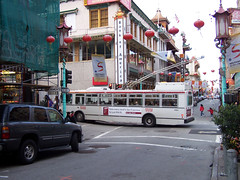
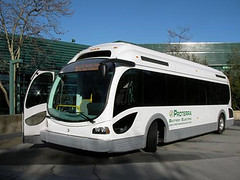
Above: A traditional electric trolley bus in San Francisco.
Below: GM’s wireless electric bus prototype. |
Electric buses offer many advantages over traditional fossil fuel buses, but they are more expensive and difficult to run. A new model by General Motors may bring them to the mainstream.
The most obvious advantage of electric buses is environmental, but the fact that they don’t spew any harmful gases into the atmosphere is hardly the only benefit. Electric buses are also quieter and smoother to ride than fossil fuel buses, resulting in a more comfortable experience for riders and fewer negative effects to the neighborhoods buses travel through.
Traditionally to run an all electric bus a transit agency had to install overhead wires. This can actually be an advantage as well, since it displays a sense of permanence to the transit line, which gives trolley buses some of the same economic development advantages of actual trolleys. On the other hand, wires can also be a big negative, both visually and fiscally. Installing and maintaining overhead wires adds so much to the cost of running a transit line that very few cities in the US use them.
But what if it were possible to run an electric bus without the wires? You’d lose that permanence advantage, but the environmental, comfort, and noise advantages would all still apply. And if, after all, wireless streetcars are being developed, why shouldn’t a wireless bus be possible too?
It turns out General Motors is working on one, along with a company called Proterra. Their EcoRide BE-35 model bus is fully electric and runs on lithium-ion battery packs that give it a 40-mile range for every 10-minute charge. The 35-foot, low floor bus design is basically comparable to normal city buses otherwise.
The website doesn’t include details such as whether the bus can run air conditioning (certainly a requirement in a muggy place like Washington), but if they can make the idea work it has potential to revolutionize urban busing.
 Cross-posted at Greater Greater Washington. Cross-posted at Greater Greater Washington.
Average Rating: 4.8 out of 5 based on 158 user reviews.
June 17th, 2011 | Permalink
Tags: bus, energy, environment, transportation

Bus route map integrated with the flag for the bus stop, for Montgomery County Ride-On’s free circulator of downtown Silver Spring.
I’m not sold on the value of bus services like this. I’d just walk between most of those destinations. Regardless, putting the map on the stop flag was a great idea.
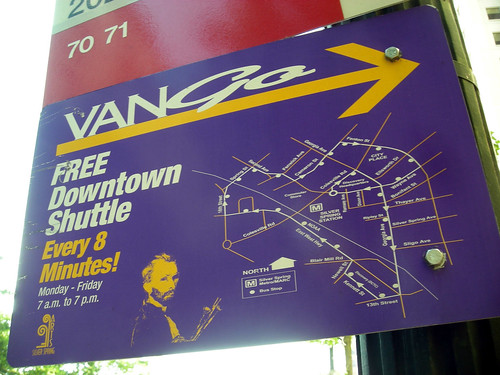
Average Rating: 4.9 out of 5 based on 237 user reviews.
June 16th, 2011 | Permalink
Tags: bus, galleries, transportation

Spotted Monday morning in Rosslyn Metro station. Not sure whether it was going in or coming down. Reader Karen updates that it has been installed at Pentagon City.

Average Rating: 4.8 out of 5 based on 287 user reviews.
June 15th, 2011 | Permalink
Tags: bike, galleries, metrorail, transportation

Craigslist’s research team has devised a formula calculating the frequency of missed connections personal ads that reference particular transit stations in five of the country’s biggest metropolitan areas. Their finding: That WMATA’s Vienna/Fairfax station is the most frequently cited out of all 750 stations studied, on a connections-per-rider basis. That is to say, a larger percentage of riders at Vienna make a missed connections post on Craigslist than at any other station in any other city that was studied.
It seems likely to me that a lot of people who could be elsewhere on the Orange line are getting picked up as Vienna riders because they may have mentioned which direction they were heading. If that’s true this may be somewhat less than scientifically valid (there’s a shocker). Or maybe the platforms at Vienna are actually a meat market of super sexy singles looking to hook up.
It could happen, I guess.
Average Rating: 4.8 out of 5 based on 211 user reviews.
June 14th, 2011 | Permalink
Tags: fun, metrorail, social, transportation

|
Media





Site
About BeyondDC
Archive 2003-06
Contact
Category Tags:
Partners
|












